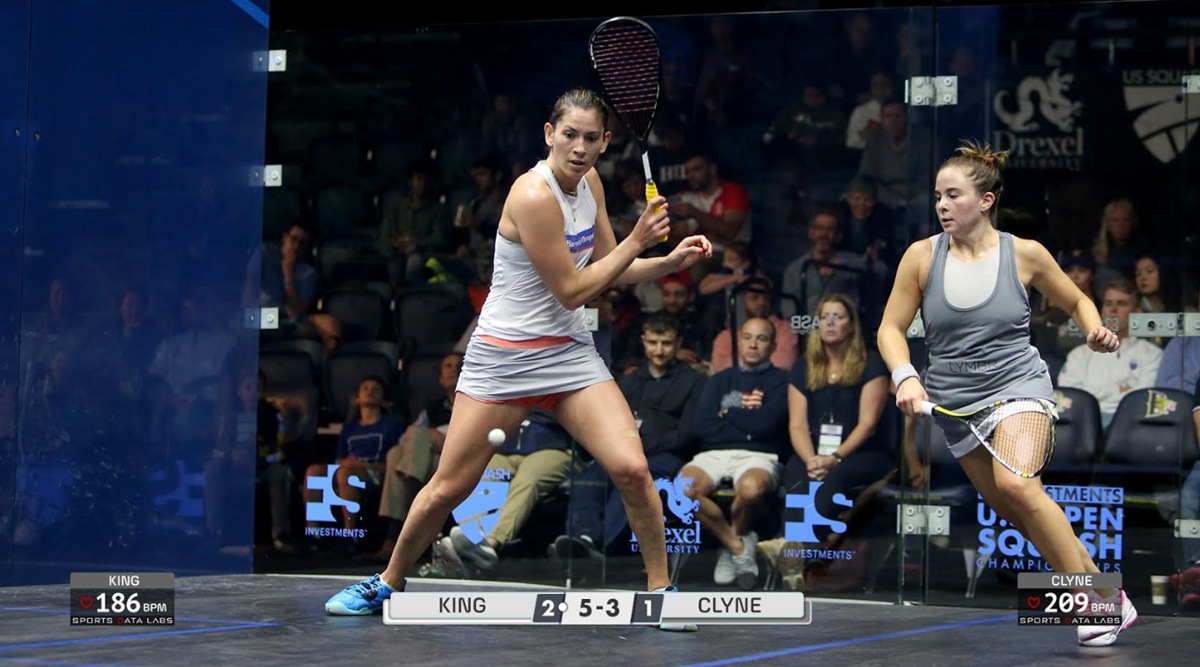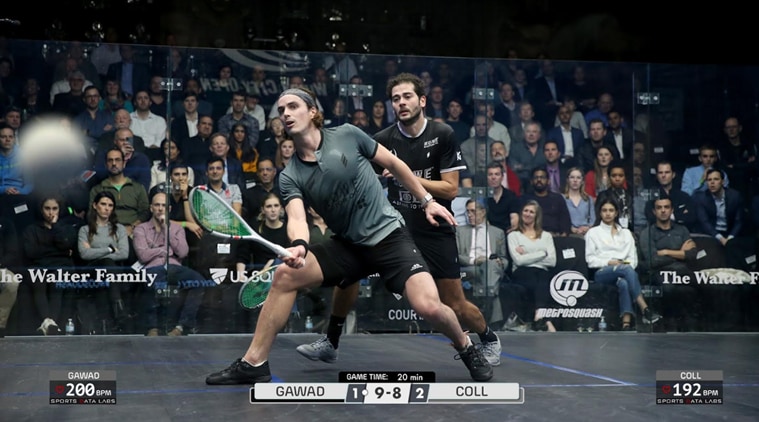
[ad_1]
 Such player data gets flashed on courtside screens at various junctures of the match right now. (Photo credit: Sports Data Labs)
Such player data gets flashed on courtside screens at various junctures of the match right now. (Photo credit: Sports Data Labs)
Saurav Ghosal calls it a not unwelcome “objectification of sport.” Squash will start payouts to players soon, by monetising their physiological data like heart rate — something that gets flashed on courtside screens at various junctures of the match right now. The governing body, Professional Squash Association (PSA), reckons that this data belongs to the athletes. But by securing their consent with remunerative advances for commercially using these numbers, the sport seeks to attract more eyeballs and chatter.
“We’ve known this for the last year and a half. Anything that gives you new information about a sport evokes interest. For example, football has insane number of stats which entices people’s imagination,” Ghosal says. The 34-year-old hasn’t signed up yet, but reckons monetising players’ data provides an extra incentive to getting many on board, to get the data train chugging into the land of social media chatter and newer fans besotted by numbers.
Ghosal has his reasons to not jump on board as of now. “Tried it in training, but the straps slip down the chest. And if it’s too tight, breathing becomes constrained,” he says. But there’s a strategic thought to his non-consent: “I’m unsure if I want the whole world to know what my heart rate is at any point in the match,” he says coyly, while lauding the technological upgrade in his sport.
Squash beams out heart rates in real-time on screens currently – subject to a player’s permission. Possibilities in data mining are immense now that techies have entered the four walls of squash. “There’s heart rate, for starters. Numbers will be interesting when a player’s tired and when playing at high pace. We can add other metrics like distance covered, speed going up to the front wall and at the back of the court. Total mileage and average rally lengths – shortest, longest. How many rallies that go up to one minute, how many are 30 seconds,” he thinks aloud. “It’ll make people see sport in a totally different way,” the World No. 13 adds.
While audience are allured by comparative stats – speed, etc which are simplistic, players tend to be immersed in more nuanced metrics. “Personally, I’d love to know at what heart rate are we playing maximum intensity. Top players can go up to 185-200. I’d also like to know how quickly their heart rate comes down,” he adds. The numbers regarding attritional rallies and fast ones per player and spikes in heart rate can also prove interesting to know.
 (Photo credit: Sports Data Labs)
(Photo credit: Sports Data Labs)
Ghosal though is realistic. “Look, all this needs a support team like a video analyst to help apply in training. But this is definitely the future of the sport as spectators come to demand these data,” he says.
While all this is useful information for a coach, an ideal heart rate can’t be set as a target, national coach Cyrus Poncha says. “A player putting in less effort into the same output will be naturally dubbed a good player,” he says. Which means that commercialising the data is aimed to pique the curiosity of spectators, more than for coaching analytics. “Heart rate and distance covered used to be assumptions we made earlier. Now they are formalised as facts,” Poncha says, adding that collecting and collating the data is good as players now routinely clock a heart rate of 180 on GPS gadgets during matches that go up to two hours. “It’s useful in close matches between equal calibre players because the intensity is so high so these might be the only differentiators,” he says.
Ironically, a number that’s been discussed at length within squash circles even as high-tech insights swamp the sport, is the number of decisions (lets/no lets/ strokes) given in a match by officials. A highly human variable.
Ghosal reckons data talk making its way into squash was inevitable. “Look at football and its ridiculous numbers. All chatter of transfer windows has fans talk about which player can create space on which side. Earlier it was if (Kylian) Mbappe is quicker or Alphonso Davies. Squash is just beginning,” he says. However, he warns that though data opens up new talking points for fans, it cannot dominate scouting appraisals of players. “Stats are big, but they don’t make or break a player,” he says. Like Cristiano Ronaldo, whose leaps off the ground gets the digital measure tapes busy. “What we see is that he jumps so high… but there’s nothing to measure how accurately he gets into position to head the ball in. It can’t be about superlative degrees — otherwise Usain Bolt would become the best football player. Things like a good read on the game and the mental side cannot be measured. Federer, Nadal, Djokovic are all good, but they are made differently – which can’t be calibrated.”
Likewise for squash. “Many things make a good squash player. Though it’s universally accepted you need to be fit. But that wouldn’t imply that great marathoners, the fittest people, will be great at squash necessarily,” he quips. Data though is the newest gimmick in town and players are getting duly recompensed for standalone physical feats they are capable of, which in turn can bring in new fans. Ghosal though is willing to forsake some serious dough and not wear his heart rate on his sleeve.
📣 The Indian Express is now on Telegram. Click here to join our channel (@indianexpress) and stay updated with the latest headlines
For all the latest Sports News, download Indian Express App.
© The Indian Express (P) Ltd
[ad_2]
Source link